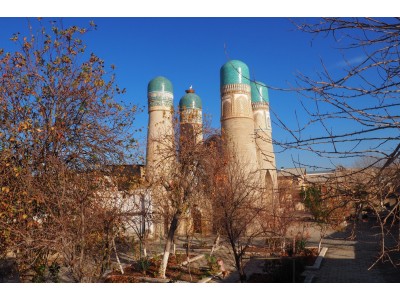
Chor-Minor (the name translates from Perisan as ‘four minarets’) is the most original and interesting construction in Bukhara situated deep inside an ancient residential quarter (mahalla) ten minutes on foot from Labi Khauz. Chor-Minor consists of an entrance portal (chartak) of an unusual shape with a dome and four low towers imitating minarets, whose domes were once decorated with blue tiles and drums covered with mosaics of bricks against a terracotta background (single blue and white slabs). The minarets’ trunks are constructed of polished bricks. The portal is the only element that has remained of a madrasah complex, while the rest – students’ rooms (khujras), court, mosque and other parts – have been lost in the course of the past 200 years. A person named Niyazkul, a rich Turkmen merchant who had assimilated into the local community, is reported to have sponsored the construction. Some other sources state that Niyazkul was an imam at the Kalan mosque. Chor-Minor’s construction date, 1807, is inscribed inside the domed room. more...
Some people call Chor-Minor the Taj Mahal of Bukhara. According to legend, Niyazkul had seen the famous mausoleum during his visit to India and was so impressed by its beauty that made it his goal to build something similar in grandeur. It was an interesting idea and the structure that resulted was strikingly different from what was being constructed in Bukhara at that time. The four sturdy tower-minarets standing very close to each other seem to squeeze the cubic domed building of Chor-Minor. The entrance to the madrasah was decorated with a tall portal, and a similar portal used to adorn the exit to the court. The ground floor of the mosque is occupied by a vestibule. Over the vestibule there was a guard room, from where a passage led to the towers. The side walls of the madrasah were once lined with chains of rooms for the accommodation of students. The upper floor used to house the school’s library, which was relatively small but contained diverse literature, including quite a few valuable manuscripts, according to the madrasah’s contemporaries.
The domes of all the four minarets had served as nesting places for storks for almost two centuries, until the late 1980s, which is always regarded as a good token. The nests used to reach almost 1 m in height and weigh almost 200 kg. Unfortunately, the city’s urbanisation led to severe shortage of storks’ food and, as a result, to the abandonment of the nests by the birds. Later the nests were removed during one of the restoration activities.
Chor-Minor Madrasah photos
 Posted by
Centralasia Adventures
Posted by
Centralasia Adventures
Touristic company “Asia adventures” - DMC operator in Central Asia.
Already 26 years, we organize any possible tours in Uzbekistan and other neighbor republics as Kazakhstan, Kyrgyzstan, Turkmenistan, Tajikistan, Kashgar (Western China) and the Caucasian region (Azerbaijan, Georgia, Armenia).
Chor-Minor Madrasah on map


 Centralasia Adventures
+998712544100
Centralasia Adventures
+998712544100




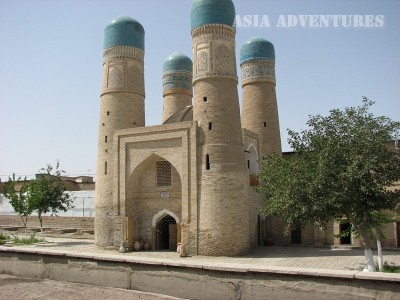
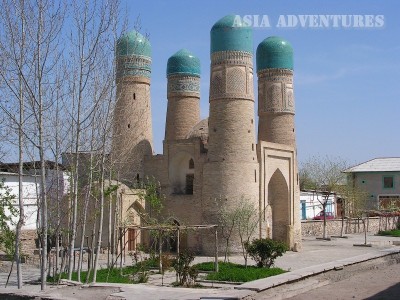
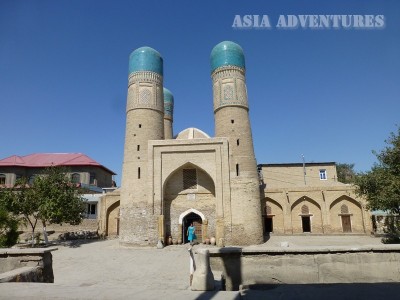
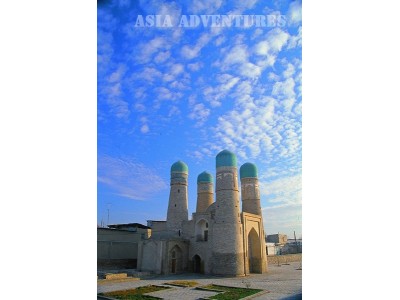
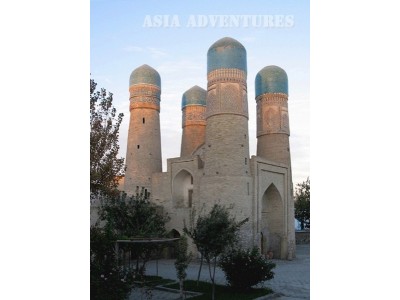

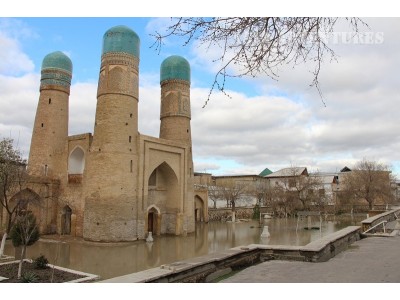
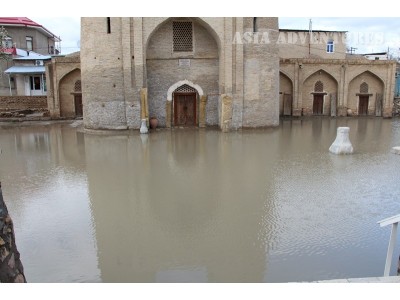
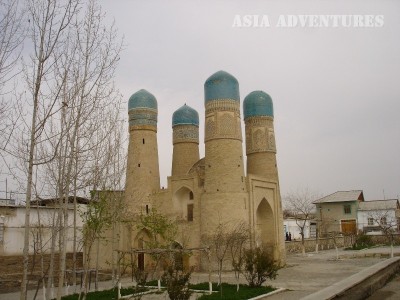
 Posted by
Posted by

